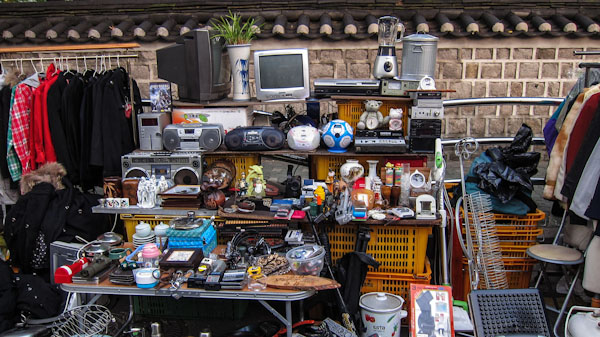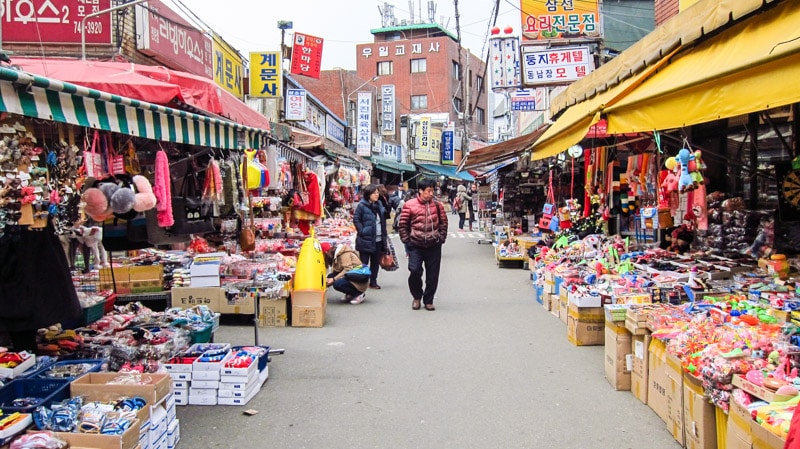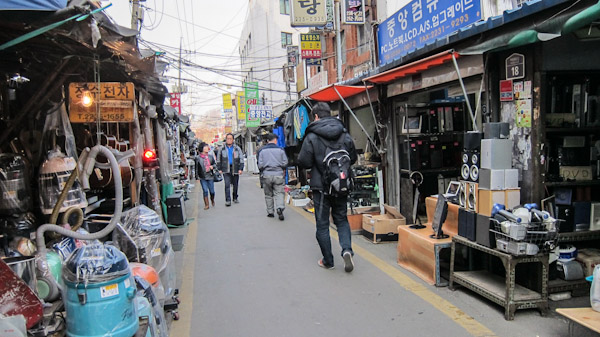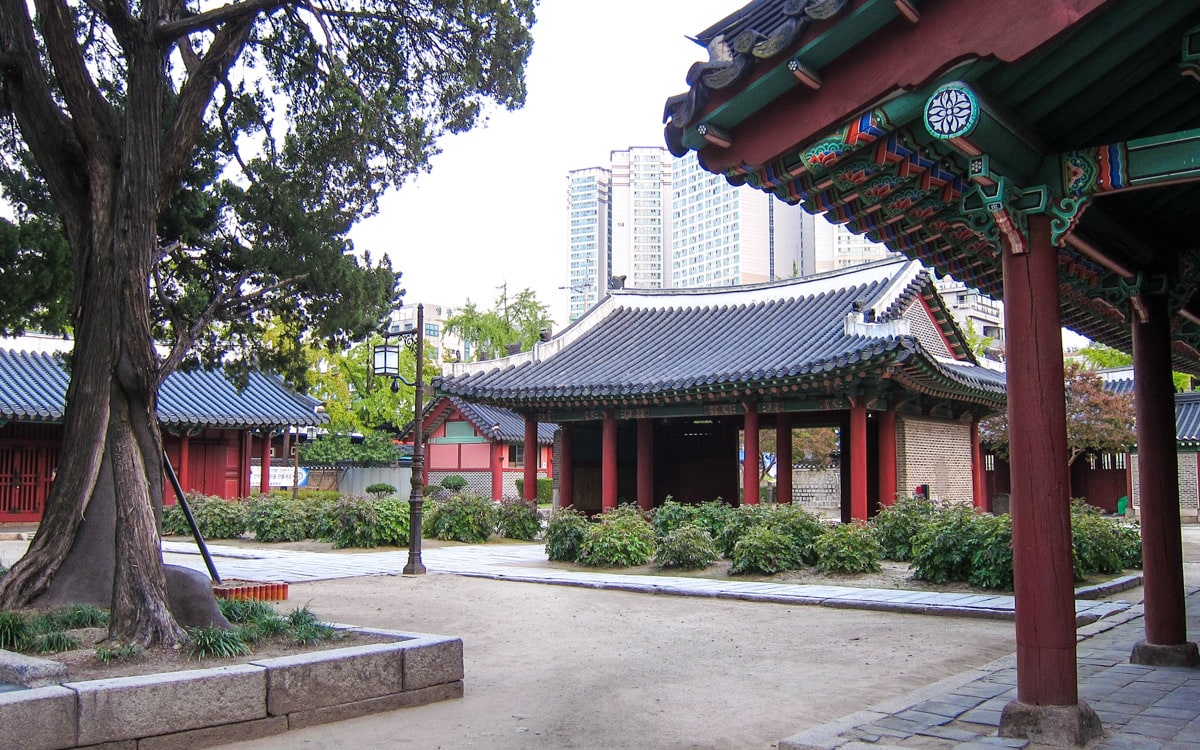
Dongmyo Shrine is a shrine where ancestral sacrifices to the Chinese military commander Guan Yu were performed. It is also known as Seoul Donggwanwangmyo, which means Gwanwangmyo in the east of Seoul.
Guan Yu, who died in 219, was a general who played an important role in the downfall of the Han Dynasty (206 BC–220 AD). Yu helped establish Shu Han, one of three major states of China during the Three Kingdoms period (AD 220–280).
Construction on the shrine began in 1601 during the 34th year of the reign of King Seonjo.
During the Imjin War in 1592, the Japanese invaded Korea. The Ming Dynasty helped the Joseon Dynasty during this period. For their help, the Ming Dynasty requested this shrine to be built in honor of Guan Yu, who was worshiped in China. This is similar to many of the Munmyo shrines, such as Seoul Munmyo, which were built in honor of Confucius.
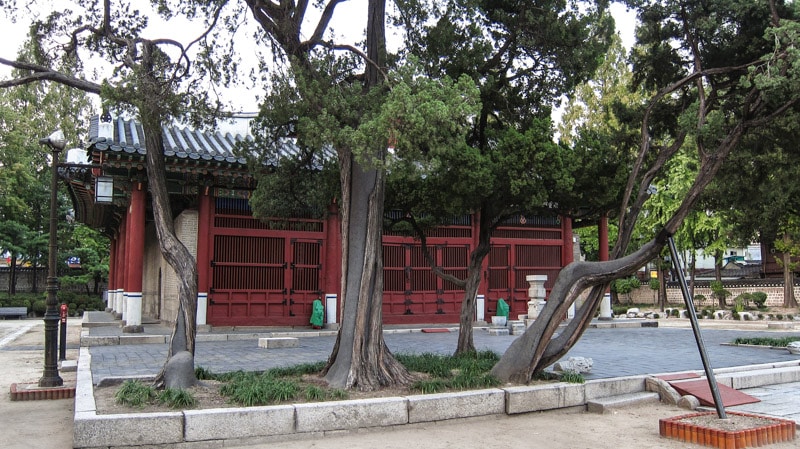
Dongmyo is composed of two main buildings which are attached to each other front and rear. The shape of the roof is based on the Chinese letter gong. Both these features are very common for temples and shrines in China.
Inside, the buildings are separated into two sections. The front section is known as jeonsil. This was the front room used for sacrificial rites. The rear section is known as bonsil. This is the main room which houses a statue of Guan Yu and other generals.
On the exterior, these buildings feature wide brick walls and pillars to the roofs.
There were three other similar shrines built in Seoul in the north, south, and west. Donggwanwangmyo, in the east, is the biggest and most brilliant. The Chinese style architecture is unique in terms of its construction, interesting roofs, brick walls, statues, and decorations.
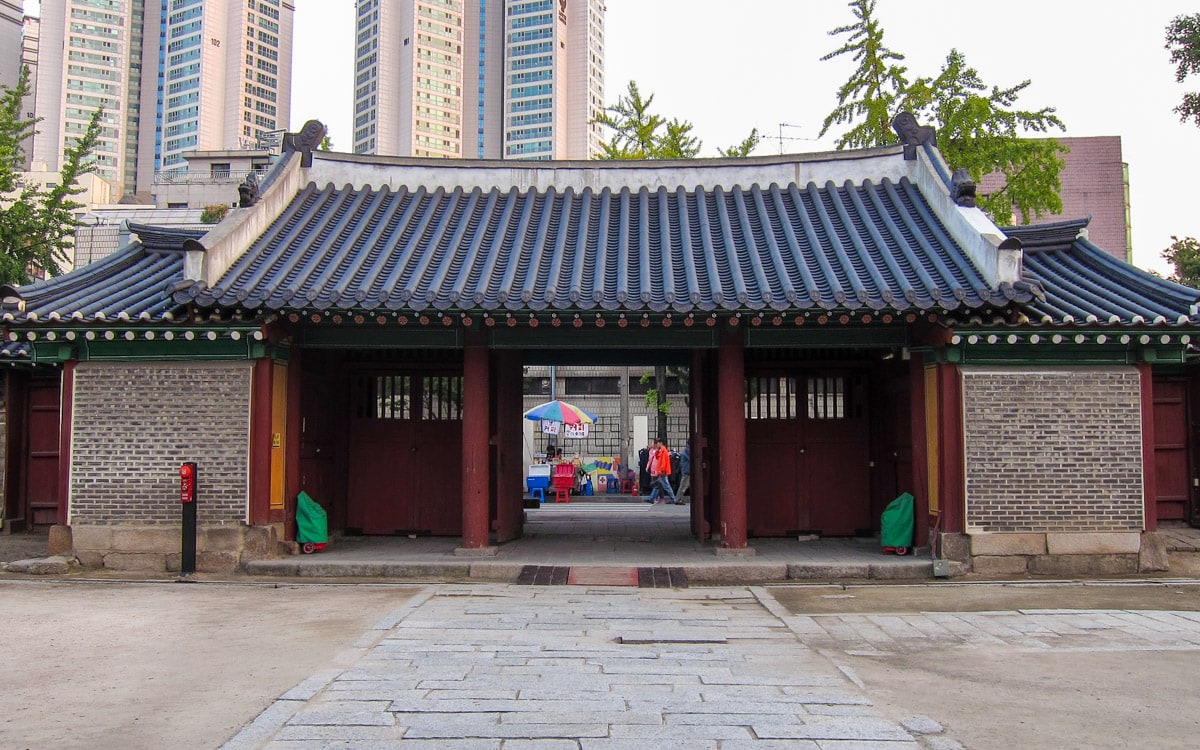
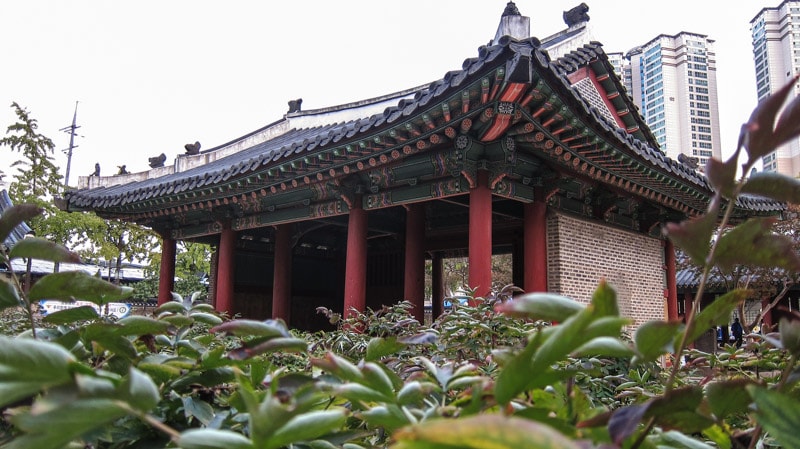
Dongmyo Shrine Information
Admission
Free
How to Get Here
Take Subway Line 1 or Line 6 to Dongmyo Station (Exit 3).
Turn right at the first street onto Jong-ro 58-gil.
Continue for 130 meters and turn left.
The entrance to the shrine will be on the left.
Dongmyo Shrine Video
Map
Additional Resources
Viator by TripAdvisor
Viator is a popular online platform that helps travelers book tours, activities, and unique experiences worldwide, including in Seoul. It connects users with a wide selection of options – from sightseeing tours to cultural events and outdoor adventures – all offered by local providers.
Klook
Klook offers discounted tickets and reservations for various attractions and services in Seoul, from theme parks and museums to tours and transportation options.
Rakuten
Save money while exploring Seoul with Rakuten's cashback program. Book your hotels or other services through Rakuten and enjoy cashback rewards and exclusive deals.
If you sign up using the link below, you could earn $30 cashback on your first purchase over $30.
Book Recommendations
For an immersive guide to Seoul, many travelers choose to bring a book along. Fodor's Seoul, for example, offers detailed recommendations on sights, restaurants, maps, and travel tips.
Nearby Sights
Myogaksa Temple
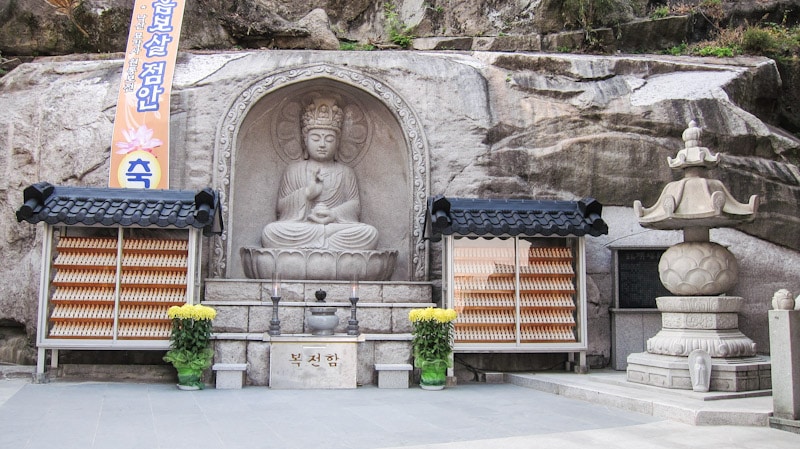
Myogaksa Temple is a small and hidden Buddhist temple located on the side of Mt. Naksan in the quiet residential district of Jongno-gu, Sungin-dong. Getting to the temple requires a short but uphill walk up Choui-ro street from Dongmyo Station below. Myogaksa was established in May 1930 by Monk Taeheo Hongseon.
Seoul Folk Flea Market
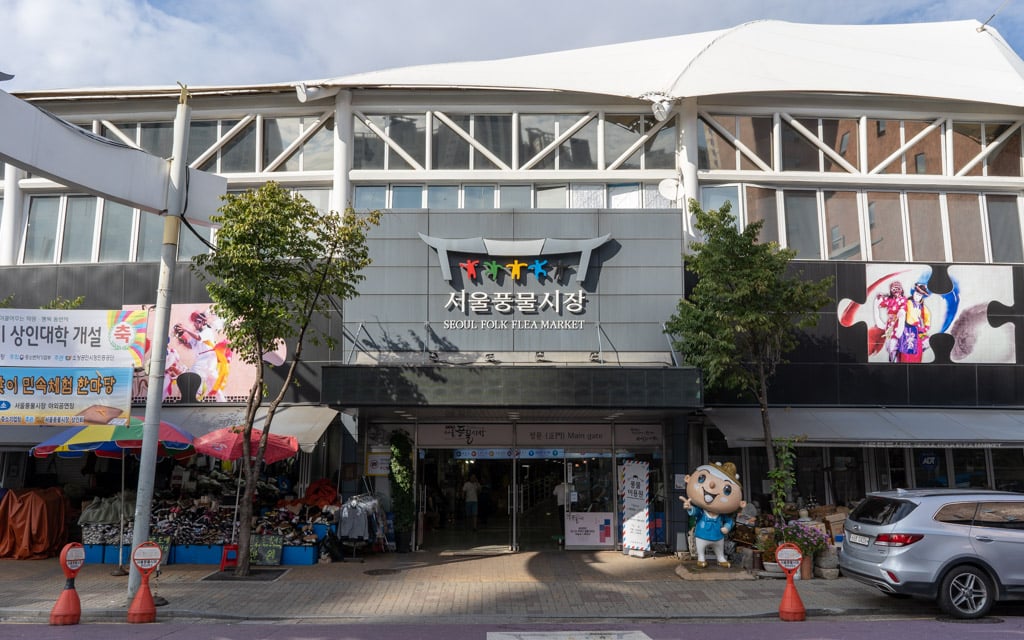
The Seoul Folk Flea Market is a vibrant indoor flea market where you can find traditional and modern Korean folk items including clothes, tools, and food. Almost anything you can think of is sold here including new, old, rare, and vintage items that you many never find anywhere else. Before being moved indoors into the current modern building, vendors and sellers gathered in the area around the Cheonggyecheon Stream to sell their items.
Seoul Jungang Market
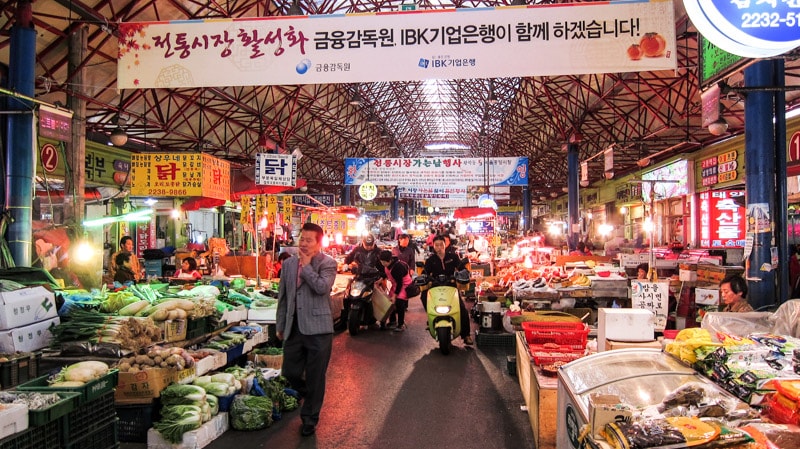
Seoul Jungang Market is a traditional market located east of Heunginjimun Gate (Dongdaemun) that specializes in dried fish and other seafood. The market dates back to 1957, a few years after the Korean War. With over 1,000 vendors, the market has become the biggest dried seafood and seaweed markets in Korea. Most vendors only sell a few items which keeps cost low while maintaining quality.
Last Updated on Mar 14, 2025
